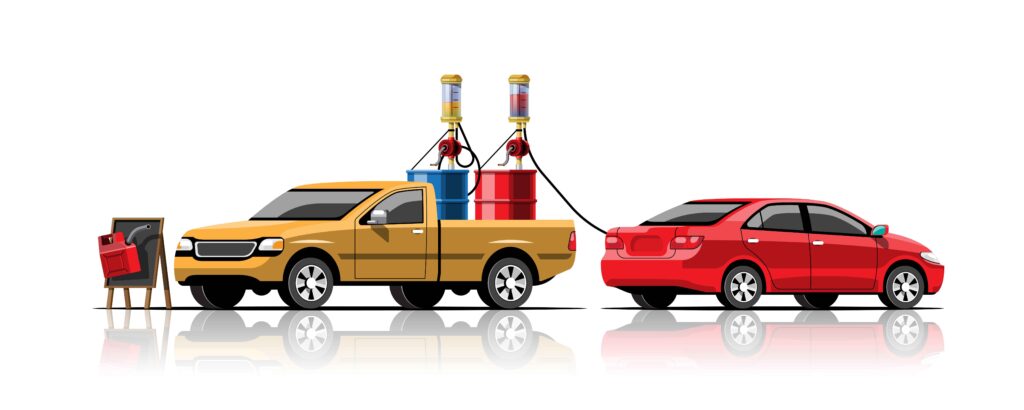Gas Delivery is changing fast—so if you’re wondering, “Will drones really drop fuel at my site?” or “Can electric trucks handle hazardous loads?” you’re not alone.
Real worries people have (in plain talk)
-
“Is drone fuel delivery even legal and safe?”
-
“Can EV tankers pull a full day’s route without running out of charge?”
-
“Will AI routing actually cut my costs—or just add another dashboard?”
-
“How do I keep compliance tight while trying new tech?”
Let’s grab a coffee and unpack what’s real, what’s hype, and what’s next for Gas Delivery.
Why Gas Delivery is ripe for disruption
What’s pushing change
-
Cost pressure: Diesel, insurance, and driver shortages are squeezing margins.
-
Sustainability: Corporate buyers want cleaner operations (scope 1 & 3).
-
Urban rules: Low-emission zones and noise restrictions are spreading.
-
Customer expectations: “On-demand, trackable, contactless” is the new baseline.
The big idea: Smarter, cleaner, faster last-mile fuel logistics—with safety and compliance baked in.
Drones in Gas Delivery: Niche today, strategic tomorrow
Where drones make sense (right now)
-
Remote/critical sites: Farms, mines, construction camps needing small, urgent top-ups.
-
Emergency response: Power outages, storm zones, or disaster relief where roads are blocked.
-
Micro-deliveries: Portable tanks, generators, or specialty fuels for equipment.
What to watch
-
Regulations: BVLOS (beyond visual line of sight), hazmat permissions, and airspace corridors.
-
Payload & safety: Spill-proof pods, redundant parachutes, and geofencing.
-
Chain of custody: Digital seals, telemetry logs, and auto-generated proof of delivery.
Coffee-chat example:
A construction firm used drone drops to keep site generators running during a washed-out access road closure. It wasn’t cheaper than trucks—but it prevented a 48-hour outage, saving the crew schedule.
Bottom line: Drones won’t replace tankers. They’ll bridge gaps where speed and access matter more than volume.
EV Fleets: From pilot projects to practical routes
Why EV trucks are entering fuel logistics
-
Torque & stop-start efficiency: Perfect for urban, multi-stop routes.
-
Lower noise: Friendlier for night deliveries and residential zones.
-
Brand optics: Shifts the narrative from “fossil heavy” to “future-ready.”
Operational truth
-
Range reality: Great for short-haul, high-density routes; plan charging windows.
-
Payload trade-offs: Battery weight can reduce capacity—optimize with dynamic routing.
-
Charging strategy: Depot fast chargers + opportunity charging at predictable stops.
Practical wins
-
Regenerative braking makes city routes surprisingly efficient.
-
Predictable duty cycles = predictable charging schedules.
-
Data-friendly: EVs integrate cleanly with telematics for maintenance and TCO tracking.
AI Routing: The quiet superstar behind the wheel
What “AI routing” actually delivers
-
Traffic-aware sequencing: Reroutes on the fly to avoid downtime.
-
Demand forecasting: Predicts when customers will need top-ups (seasonality + usage).
-
Fleet right-sizing: Matches vehicle type (EV vs diesel) to route profile in real time.
-
Safety overlays: Avoids school zones at peak, enforces speed caps, flags hard braking.
Features to insist on
-
Hard constraints: Hazmat corridors, bridge limits, low-emission zones.
-
Soft constraints: Customer windows, noise curfews, site access rules.
-
Clean integrations: TMS/ERP, e-POD apps, fuel level sensors, and driver mobile.
Mini-story:
After switching to AI-assisted routes, a distributor cut empty miles by ~12% and late deliveries by ~30%—just by resequencing stops and auto-filling backhauls.
Safety & compliance: Non-negotiables in a high-tech world
Build your “safety stack”
-
Digital SDS access + driver checklists on mobile.
-
Smart seals and sensorized hoses to catch misfuels or leaks.
-
Geofenced procedures: System won’t start pumping outside approved zones.
-
Incident capture: Dashcam + telematics + auto reports for auditors.
Training that sticks
-
Bite-size micro-modules (5–7 minutes)
-
Simulated drills (spill, misfuel, emergency shutoff)
-
Quarterly refreshers tied to real incident learnings
Customer experience 2.0: Transparent, fast, hands-off
What buyers now expect
-
Live ETAs & map tracking (like food delivery, but for fuel).
-
Clear invoice line items: base price, delivery fee, environmental or zone surcharges.
-
Self-serve portals: Schedule, reschedule, and set tank-level alerts.
-
e-POD with photos: Tank ID, meter reading, timestamp, signature.
Easy wins
-
Proactive texts: “We’re 20 minutes away.”
-
Threshold alerts: “Your generator will hit 25% in 36 hours—book now?”
-
SLA options: Economy, standard, rush—priced transparently.
Sustainability without greenwashing
Real levers
-
EV where it fits; HVO/bio-diesel where it doesn’t (yet).
-
AI routing to cut empty miles.
-
Idle-off policies enforced via telematics.
-
Lifecycle reporting: Show customers avoided CO₂ and efficiency gains.
Pro tip: Publish a short annual Sustainability Snapshot—routes optimized, idling reduced, EV miles added, spills prevented.

